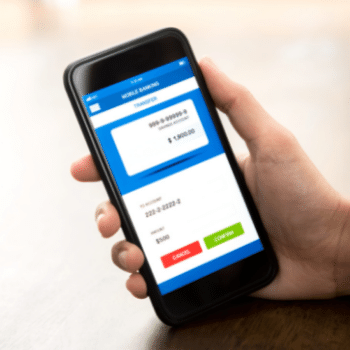Internet banking: a facility that can become a threat
 Fortunately, for younger people, going to a bank branch to transfer money or to pay bills is unthinkable. Internet banking — or mobile banking, as the concept is called when applied to mobile devices — is now ubiquitous in Brazilian culture, allowing anyone to make financial transactions using nothing more than a computer with internet access. On the desktop, you simply use your favorite browser; on your smartphone, your institution's official application.
Fortunately, for younger people, going to a bank branch to transfer money or to pay bills is unthinkable. Internet banking — or mobile banking, as the concept is called when applied to mobile devices — is now ubiquitous in Brazilian culture, allowing anyone to make financial transactions using nothing more than a computer with internet access. On the desktop, you simply use your favorite browser; on your smartphone, your institution's official application.
The history of internet banking in Brazil goes back to the end of the 90s, right after the repeal of the National Informatics Policy (PNI is the Brazilian acronym), which was a protectionist policy that prevented the importation of foreign technologies in benefit of those developed nationally. One of the first virtual banking systems in our country was, in fact, designed by a 100% Brazilian company, although today the integration of certain foreign technologies is common.
Regardless of nationality, one thing is certain: net banking is here to stay. According to a survey conducted in September, 2019 by the Central Bank of Brazil (BACEN), internet and mobile banking grew by 4% and 17%, respectively, representing 76% of all bank transactions in the country. Meanwhile, the number of automated teller machines (ATMs) decreased by 3% in the same period, proving that even such machines are becoming obsolete.
Safety Tips
Of course, not everything is a bed of roses. With the advent of internet banking, cyber criminals have also begun to target this sector, developing specific malware to intercept access to your bank account, either to steal sensitive data or to carry out fraudulent transactions. Although institutions are constantly aiming to improve the security of their systems and implement additional identity verification methods, the “war” continues.
Here are some tips on how to use internet banking safely:
-
Use strong passwords: just like any other online service, always rely on credentials that are harder to guess, making it more difficult for digital hackers to attempt a brute force attack. Also adopt each and every additional identity verification feature that your institution offers, including two-factor authentication;
-
Use only reliable machines: we know that sometimes, in a hurry, it is very tempting to access your bank account on other people's smartphones and notebooks. However, avoid this temptation — you never know if your friend's or family member's gadget is infected with malware that could steal your information. In some cases, this virus may have even been placed there intentionally;
-
Avoid public networks: do not use a cafeteria's Wi-Fi to check your bank balance. Public internet points can be intercepted by criminals to practice what we call man-in-the-middle, in which the perpetrator is able to “view” the data you are exchanging with the server of the banking institution. Prefer to use your mobile network;
-
Don't fall for phishing: overdue accounts or allegedly expired tokens are some of the strategies employed by swindlers to convince you to click on a link sent via email and direct you to a fake version of your internet banking page. Remember: your bank will never send you an email with a direct link to take any action, so ignore such content.
And, of course, always make sure you have a good antivirus installed and that al the software on your machine is updated. A simple vulnerability can serve as a gateway for banking malware, so this is always worth reinforcing.
